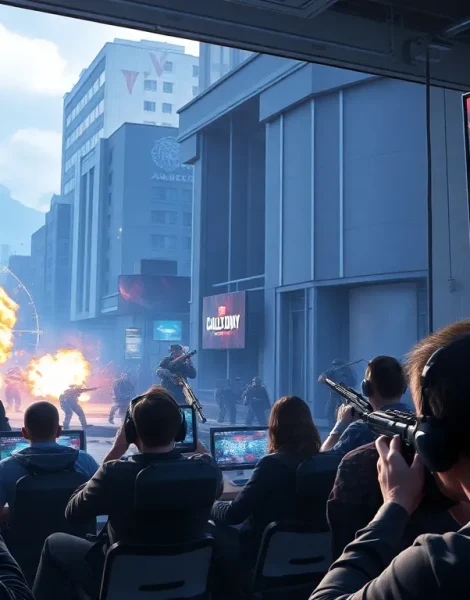In the wild world of cinema and gaming, few things grab attention like a jaw-dropping kill count. It’s not just about the numbers; it’s about the thrill, the adrenaline, and the outrageous creativity that goes into racking up those stats. From horror flicks that keep audiences on the edge of their seats to video games where players become virtual assassins, the quest for the highest kill count is both an art and a competition.
Table of Contents
ToggleOverview of Top Kill Counts
Top kill counts illustrate the intensity and engagement of various media narratives, especially in film and video games. Many horror films use largely exaggerated kill counts to heighten suspense and provoke thrills among viewers. Iconic movies like “Halloween” and “A Nightmare on Elm Street” showcase significant kill numbers, creating memorable scenes that captivate audiences.
In gaming, titles such as “Call of Duty” and “Doom” emphasize kill counts as a measure of player skill and competition. Achieving high kill counts in these games often requires not only quick reflexes but also strategic planning and team coordination. Actual statistics reveal that players can amass thousands of kills in multiplayer games, further enhancing the adrenaline-fueled experience.
Genres vary in their approach to kill counts, with some focusing on horror’s shock value while others push for action’s excitement. Each high count often corresponds with specific gameplay styles or narrative techniques. For instance, survival horror games emphasize limited resources, heightening the stakes of each kill.
Notable franchises integrate storytelling with kill counts, allowing audiences to connect deeply with characters. Engaging narratives can make each kill more significant, transforming numbers into meaningful moments that resonate throughout the plot. These factors contribute to the allure of achieving high kill counts, whether on screen or in virtual environments. The evolving nature of storytelling continues to influence how high kill counts are perceived and celebrated, making them a focal point in evaluating success in both film and gaming.
Importance of Top Kill Counts

Top kill counts play a crucial role in both cinema and gaming, influencing viewer engagement and player experience. Their significance extends beyond mere numbers, shaping narratives and player dynamics.
Historical Context
Historical perspectives reveal that kill counts have evolved significantly over time. In early horror films, such as “Psycho,” few deaths heightened tension and suspense. Transitioning into the slasher genre, films like “Friday the 13th” multiplied kills, exploiting shock value for audience engagement. As gaming emerged, titles such as “Doom” in the 1990s integrated kill counts as essential features, laying the groundwork for player metrics. Over the years, franchises adapted, with popular series increasingly emphasizing kill counts as narrative elements. This evolution marked a shift in audience expectations, leading to the intricate relationship between kill counts and storytelling.
Impact on Gaming Community
Kill counts greatly impact the gaming community, promoting competitiveness and skill development. Players often regard high kill counts as milestones that reflect their abilities. Titles like “Call of Duty” feature leaderboards showcasing players who achieve remarkable counts, fostering a sense of rivalry. Gamers communicate strategies, forming communities centered around achieving high kill totals. Consequently, this interaction cultivates not just competition but also camaraderie. The rise of streaming platforms allows players to share their experiences and celebrate impressive kill counts, further amplifying their importance in the gaming culture. Overall, top kill counts serve as benchmarks, driving players to enhance their skills and engage with others.
Analysis of Current Top Kill Counts
Current top kill counts reflect trends in both cinema and gaming, showcasing how they drive narratives and player interactions.
Notable Players and Their Strategies
Top players in gaming leverage various strategies to maximize their kill counts. Utilizing stealth tactics enables players to ambush opponents effectively. High mobility is crucial, allowing for quick movements across the map. Some players specialize in sniping, capitalizing on long-range precision; others favor shotguns for close-quarters dominance. Mastering situational awareness leads to predicting enemy movements, which significantly boosts opportunities for kills. Streamers often highlight these strategies during live sessions, inspiring others in the community to adopt similar approaches.
Comparison Across Different Games
Kill counts vary widely across gaming titles, with competitive shooters often presenting higher thresholds. “Call of Duty” features realistic settings, where calculated engagement is essential for achieving high kill counts. Players accumulate kills over multiple rounds, showcasing advanced tactics. In contrast, “Doom” embraces fast-paced action, where quick reflexes translate to impressive kill totals in shorter timeframes. RPGs might emphasize narrative over sheer numbers, leading to a different focus on strategic planning rather than continuous killing. Genres emphasize distinct gameplay approaches, illustrating the diverse landscape of kill counts in gaming culture.
Controversies Surrounding Top Kill Counts
Discussions around top kill counts often ignite debates about their implications in entertainment.
Ethics of Kill Count Competition
Ethical concerns arise regarding the glorification of violence through kill counts. Critics argue that emphasizing high kill numbers can desensitize audiences, promoting unrealistic views of death. Many contend that this approach diminishes the value of life by trivializing killings in narrative contexts. Developers also face scrutiny for designing games that prioritize kills over other forms of storytelling. Performing well in games should not solely rely on kill counts but encompass strategic gameplay and teamwork. Addressing these ethical dilemmas is vital to fostering a responsible entertainment culture.
Community Reactions and Criticism
Community reactions to top kill counts vary widely, with some embracing the excitement they create. Enthusiasts appreciate the competitive thrill of achieving high kill counts, often celebrating accomplishments on platforms like Twitch. However, criticism also surfaces, particularly regarding toxicity associated with kill-centric environments. Players express concern over increased aggression among peers, attributing it to a focus on scoring kills. Discussions about the negative impact on mental health within gaming communities emerge frequently. Striking a balance between competition and camaraderie proves essential for maintaining a positive atmosphere.
Future Trends in Top Kill Counts
Future trends in top kill counts emphasize the evolving landscape of both cinema and gaming. Statistical tracking and data analytics play a more prominent role in shaping narratives. Real-time performance metrics enable filmmakers and game developers to understand audience engagement better.
Innovative technology advances in virtual reality (VR) and augmented reality (AR) also impact kill count representation. These formats allow players and viewers to experience immersive worlds where kill counts become integral to the story. Increased interactivity fosters emotional connections, making each kill felt on a deeper level.
Competitive gaming continues to drive expectations surrounding kill counts. Performance-based rewards and achievement systems encourage players to strive for higher numbers. As audiences seek out competitive titles, franchises adapt to these demands with gameplay mechanics that encourage destructive efficiency.
Greater emphasis on storytelling integration can be expected as well. Both filmmakers and game designers recognize the importance of context surrounding kill counts, crafting narratives that elevate each moment. The emotional weight attached to kills enhances viewer and player engagement.
Cultural commentary surrounding violence will likely shape future kill count portrayals. Social media discussions and gaming forums contribute to ongoing debates about responsible representation. Developers may shift their focus to balance excitement with meaningful content, encouraging players to engage ethically.
Shifts in player behavior are also notable, with gamers increasingly valuing cooperative experiences over individual kill counts. Title designs may evolve to reward teamwork and strategy rather than solo achievements. This cultural shift focuses on fostering inclusivity and collaboration within gaming communities.
Kill counts have become a defining aspect of both cinema and gaming. They not only enhance excitement but also shape narratives and player dynamics. As the landscape evolves it’s clear that the significance of these counts extends beyond mere statistics. They reflect creativity strategy and the emotional engagement of audiences and players alike.
Future trends suggest a shift towards integrating storytelling with competitive elements fostering a more responsible and balanced approach to entertainment. The ongoing dialogue around kill counts and their implications will likely influence how creators design experiences that resonate with audiences while promoting positive community interactions. As technology advances the potential for immersive storytelling continues to grow paving the way for new interpretations of kill counts in the years to come.









